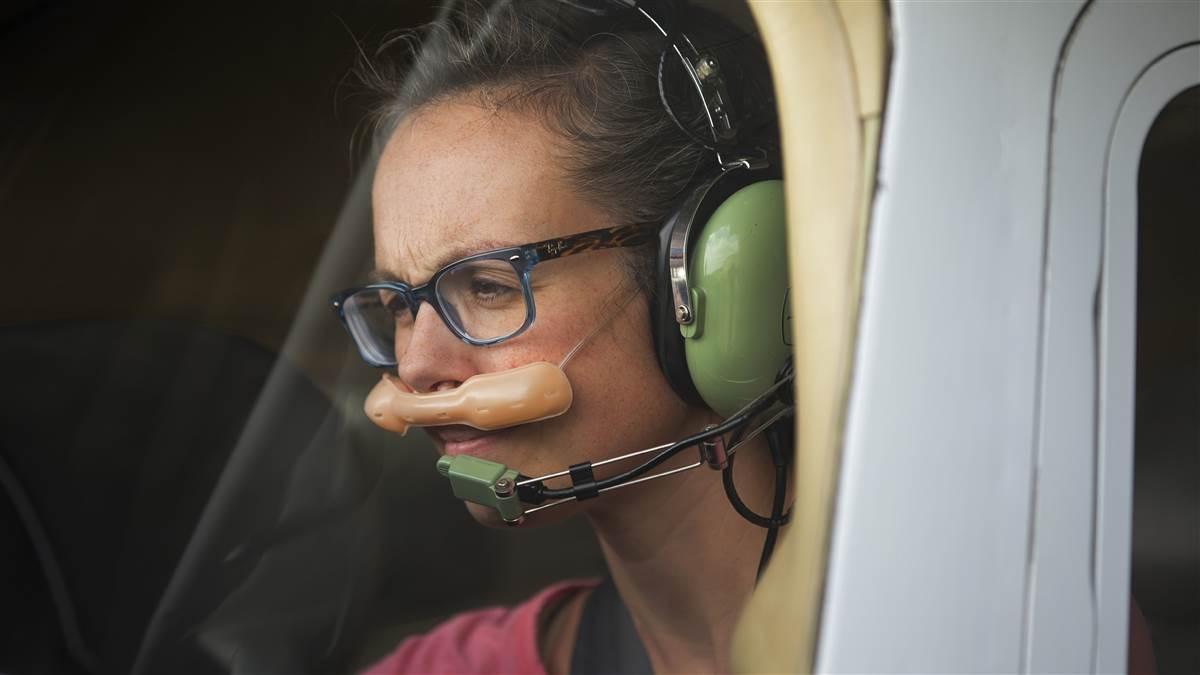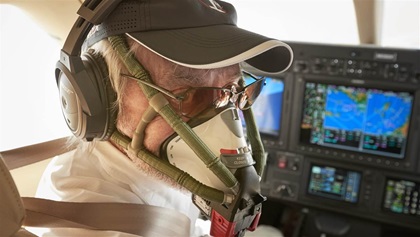Aeromedical Factors: The air up there
A beginner’s guide to oxygen use

Photography by Chris Rose
 FAR 91.211 requires pilots to use supplemental oxygen when flying at cabin pressure altitudes of 14,000 feet and higher, and for any portion of a flight at 12,500 to 14,000 feet that exceeds 30 minutes. Above 15,000 feet, all occupants must use oxygen.
FAR 91.211 requires pilots to use supplemental oxygen when flying at cabin pressure altitudes of 14,000 feet and higher, and for any portion of a flight at 12,500 to 14,000 feet that exceeds 30 minutes. Above 15,000 feet, all occupants must use oxygen.
Supplemental oxygen use usually doesn’t come into consideration for the average GA pilot. You’re not flying high enough, or in an airplane that has a service ceiling enabling it to fly at higher altitudes. If you transition to turbine aircraft, or if you fly in the mountains in an airplane that can climb higher than 11,500 feet, you’ll want to become best friends with supplemental oxygen equipment.
First, a quick explainer as to why and when pilots need supplemental oxygen in a nonpressurized airplane. Some people say the air at high altitudes gets “thinner.” The makeup of the atmosphere doesn’t change at any altitude—it is composed of approximately 21 percent oxygen and about 78 percent nitrogen. But the atmospheric pressure does change. Atmospheric pressure forces oxygen into your bloodstream through your lungs’ membranes. At higher altitudes, atmospheric pressure decreases, and the amount of oxygen forced into your bloodstream decreases.
Now you need supplemental oxygen and a delivery system to get that oxygen into your lungs and into your bloodstream, lest you suffer the effects of hypoxia: a range of symptoms including dizziness, nausea, and even unconsciousness.
Supplemental oxygen can be delivered in one of several ways: Continuous flow, like it sounds, means air flows continuously to your nose or mouth. It is a popular portable delivery system for nonpressurized aircraft, and it can be used up to 25,000 feet. A typical system uses a high pressure cylinder and a regulator, which reduces the oxygen flow to a lower pressure.
Altitude adjustable systems employ an adjustable control on their regulators. This allows the user to dial in the necessary oxygen flow for the appropriate altitude.
Altitude compensating systems are typically not portable. Oxygen flow changes automatically with changes in altitude.
Demand systems, designed for airplanes that can fly up to 35,000 feet, provide oxygen in short bursts whenever the pilot inhales. A demand system’s tight-fitting mask has switches that let the user select between a normal and a 100-percent oxygen setting. And if you’re going above 35,000 feet, you’re going to look like Tom Cruise in Top Gun. Low ambient pressure can’t force enough oxygen through the lungs’ membranes and into the bloodstream, so what is needed is a pressure-demand oxygen system that delivers on-demand, 100-percent oxygen at a slightly positive pressure. It inflates the lungs, and the user must force the air from his or her lungs to exhale.
The FARs state that in a pressurized aircraft, a single pilot must wear an oxygen mask when flying above FL350 and the cabin altitude exceeds 14,000 feet. There’s a caveat: If two pilots are at the controls and each has a quick-donning mask, there’s no need to wear a mask below FL410. A quick-donning mask is one that can be put on with one hand in 5 seconds, but it must be able to be secured, sealed, and providing oxygen within that time frame.
Pilots and passengers will breathe oxygen either through a cannula, which is a cylindrical tube that fits under the nose; or through an oral-nasal rebreather mask that fits over the nose and mouth. Cannulas are simple and easy to use, and they allow the wearer to talk or eat while wearing them, but they can be less effective if the wearer breathes through his or her mouth. The FARs limit cannulas to 18,000 feet. Rebreather masks may be worn up to 25,000 feet. Above 25,000 feet, the mask must seal over the nose and mouth so as not to allow outside air to mix into the oxygen.
Oxygen equipment must be preflighted, and the FAA suggests you use the acronym PRICE to help you remember how to inspect the equipment.
Pressure: Ensure there is enough oxygen pressure and quantity to complete the flight.
Regulator: Inspect the regulator for proper function.
Indicator: Put on the mask and check the flow indicator to assure a steady flow of oxygen.
Connections: Ensure all connections—oxygen lines, plug-in coupling, and mask—are secure.
Emergency: Have equipment ready to use for emergencies that call for oxygen (hypoxia, decompression sickness, smoke, fumes, rapid decompression). Brief passengers on the location and use of oxygen.


